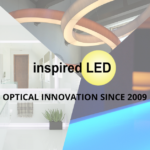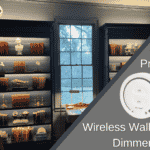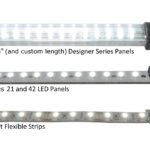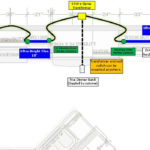Kitchen Lighting: Jazz-Up the Atmosphere
Lighting has become a key factor in the movement to reduce energy consumption, specifically the growing demand of low voltage lighting as we move into a more energy efficient future. Incandescent and florescent bulbs are quickly fading as light sources of the past, driven out of the market by a new hot commodity: LEDs. As a lower cost alternative that consumes less energy, LEDs are becoming the main light source in all lighting applications. Having several different physical forms, LEDs are a versatile option in applications ranging from commercial offices and retail buildings, to everyday use within residential homes. In fact, the largest movement in LED lighting lies in the heart of the home: the kitchen.
Kitchens are the primary focal point in every home. We often spend hours cooking, eating and hosting company in our kitchens. More time is spent in the kitchen than any other room in a house. Adding LED lighting is a great way to add warmth and character for an inviting atmosphere for both family and guests alike.
When considering low voltage LED lighting in a kitchen, a great starting point is under cabinet lighting–often the introductory location for first-time LED users. Any well-lit kitchen starts with under cabinet lighting. Adding LEDs to this area is a quick and cost-effective way to enhance the overall appearance of any kitchen. It’s not the flashy appliances or strategically placed iPad cookbook; it’s the task lighting beneath the cabinets that truly transform the look and feel of the cooking environment.
Under cabinet lighting isn’t the only useful place to add LEDs in a kitchen. Accent lighting above the cabinets is a fantastic way to add depth and character to the entire room. Having a soft glow radiating from the tops of the cabinets is a great mood setter. It also serves as a useful nightlight for those who tend to enjoy a midnight snack. Making a room more comfortable is as simple as adding a low intensity string of LEDs above the cabinets.
Kitchen lighting also extends to other areas of the kitchen, specifically inside pantries or lazy Susan corner cabinets. Updating outdated and dark kitchen spaces with under cabinet lighting is a great way to brighten up those dull-lit areas. But even the most modern kitchens can utilize LEDs. Often times, stemware, antique china, and liquor bottles are displayed in cabinets with glass doors, so adding LEDs is a creative way to highlight these areas and change the dynamic of what’s being displayed. The possibilities are endless when it comes to the light in a kitchen.
Benefits of LEDs
Much research has been put into the advantages of using LEDs, and researchers have compared the benefits of upgrading from analog to digital technology, with the upgraded use of this new “digital” light being both rewarding to the users, as well as our planet. LEDs have several benefits as listed below:
Long Life – LEDs are widely known for their exceptionally long operational life ranging from 80,000–100,000 hours (or to put it more realistically, a continuous operation of 11–12 years). In addition to a long operational life, LEDs do not burn out like standard lighting. Instead, LEDs tend to become less bright over time as their output levels slowly become less and less.
Durable – LEDs are much more rugged than traditional lighting. Because they do not use glass or filaments, they are more resistant to vibrations, shock, and severe temperature changes. This ability to stand up to dramatic temperatures fluctuations allows their versatility to be used in extreme outdoor weather conditions, as well as everyday use indoors.
Environmentally Friendly – Many traditional and florescent bulbs contain mercury–an extreme environmental threat–but LEDs are manufactured without the use of any toxic or environmentally threating materials. They also reduce your carbon footprint by being 100% recyclable and are considered earth-friendly.
Color Changing – LED light is offered in an array of colors, the foundation of which are red, green, and blue. There are also diodes (RGB) that contain all three colors that can be manipulated to nearly any color imaginable.
Efficiency – Energy efficiency is the leading benefit of LED lighting. LEDs are estimated to consume 90% less power than traditional lighting, meaning they operate at only a fraction of the energy an incandescent bulb uses.
In addition to the benefits listed above, LEDs emit low amounts of heat and generally have an extremely low profile. Couple this with easy installation, design flexibility, and zero UV emissions, and choosing LEDs as a light source is an eco-friendly no brainer.
Lighting Comparisons
How do LEDs compare to incandescent, halogen, and florescent bulbs? When thinking of which type of lighting to add to your kitchen, LEDs certainly serve as a better lighting option in comparison to the current standard.
A good basis of comparison is between incandescent bulbs and LEDs. Incandescent bulbs emit 80% of their energy through heat, leaving the other 20% of energy to light emission. This means that 80% of the energy consumption is lost to heat. LEDs are quite the opposite when dispersing electricity. They illuminate at 80% efficiency and 20% heat dispersion, making them 80% more efficient than incandescent bulbs.
Options with LEDs
With all of the different styles of LEDs, choosing the right products for your kitchen may prove slightly overwhelming. You might ask yourself: “Are flexible strip lights better than panels? What color temperature do I choose? Will the low-cost reels I see on the internet work?” While there are many factors that play a key role in your choice of LED kitchen lighting, one needs but a bit of general product knowledge to choose the right LED form factor for your kitchen. We offer a number of kits, flexible strips, panels, and angle adjust tubes to fit any application. Here’s a brief look into our most popular LED styles:
Flexible LED Strips – By far our most popular product with under cabinet lighting in the kitchen. Each strip is backed with a 3M adhesive liner that makes for a hassle-free installation. The light intensities are offered in three different styles: Normal Bright (9 LEDs per foot), Super Bright (18 LEDs per foot), and Ultra Bright (30 LEDs per foot). Ultra Bright is most commonly used for under cabinet task lighting, and Normal Bright for above cabinet accent lighting. All three flexible strip styles are easy to install, extremely low profile, durable, available in custom lengths, and an all-around great product.
Pro Series Panels – These rigid panels are offered in two sizes: 21 LED (8.75”) and 42 LED (16.75”). You’ll find the majority of these panels in pre-fabricated kits sold on Amazon, eBay, and directly through our website. Panels are also sold separately, and can easily be integrated into above and under cabinet lighting systems making them the ultimate DIY product.

Designer Series Panel – Our Designer Series Panel offers a more finished look and feel. The panels are encased with a plastic lens giving the panels a more decorative appearance. Designer Panels are ideally suited for areas where the LEDs will be visible. They are sold individually, in panel packs, or in kits that can be mixed and matched to create a system. They work great for cabinet boxes that do not have a molding or cabinet frame/lip below the cabinets.

No matter which style of lighting you’re looking for, Inspired LED has solutions. The backbone of our company lies in the kitchen. Lighting tens of thousands of kitchens annually, our products have stood the test of time and continue to stand proud within the industry. If you are new to LED lighting, under cabinet lighting in your kitchen is a great starting point; with the right guidance and knowledge, your energy efficient future can start with a simple phone to Inspired LED. Let us educate and assist you in your first, or next, kitchen lighting project.





